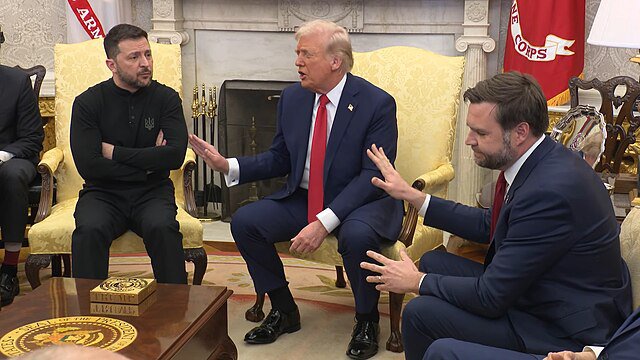Following a summit in Washington on August 18 with Ukrainian President Volodymyr Zelenskyy and several European leaders, President Donald Trump outlined a framework for negotiations aimed at ending the war in Ukraine. The proposals have drawn both cautious optimism and sharp criticism.
The summit marked Trump’s first direct meeting with Zelenskyy since the Ukrainian leader’s tense Oval Office visit in February. This time, observers described the atmosphere as notably more cordial, providing Trump with a stage to present his peace plan.
Trump’s message was clear, opting for a comprehensive peace deal negotiated directly between Ukraine and Russia rather than the step-by-step approach favored by European allies stating a need for a ceasefire as "unnecessary."
His recent shift in strategy follows his conversation with Russian President Vladimir Putin last week, a development that has widened strategic divisions between Washington and Europe. While Trump presses for a final settlement, European leaders insist that halting hostilities through a ceasefire must precede any substantive negotiations
On the question of security, Trump suggested extending the U.S. “security assurances” to Ukraine similar to NATO’s Article 5 commitment, where an attack on one member is considered an attack on all. He reemphasized, however, that this would not include NATO membership for Ukraine and ruled out deploying American ground troops. Instead, the President has suggested that the U.S. play a supporting role in the form of air power. “We're willing to help them with things, especially, probably, by air,” Trump said to Fox News. What that entails has yet to be disclosed
European allies, meanwhile, signaled that they would likely bear the bulk of responsibility for enforcing any future guarantees. “When it comes to security, (Europeans) are willing to put people on the ground,” Trump confirmed. The stance reflects his long-standing push to scale back direct U.S. military commitments while pressing NATO partners to shoulder a greater share of defense.
The most contentious element of Trump’s latest proposal involves potential territorial concessions having suggested negotiations that would see Ukraine cede parts of the Donbas region and recognize Russia’s annexation of Crimea in exchange for peace. Zelenskyy rejected the idea outright, pointing to Ukraine’s constitutional commitment to territorial integrity.

After the discussions in Washington, Zelenskyy told reporters that “we had a truly warm, good and substantial conversation.” He noted that the next stage of negotiations depends on Putin, adding that he was prepared for what would mark their first face-to-face encounter since Russia’s invasion nearly three and a half years ago. “I confirmed – and all European leaders supported me – that we are ready for a bilateral meeting with Putin.”
For now, Trump’s peace plan remains more of an outline than a concrete pathway. Whether it evolves into genuine negotiations or becomes another failed attempt at brokering peace depends largely on whether Moscow, Kyiv, and Washington can find even the smallest patch of common ground.